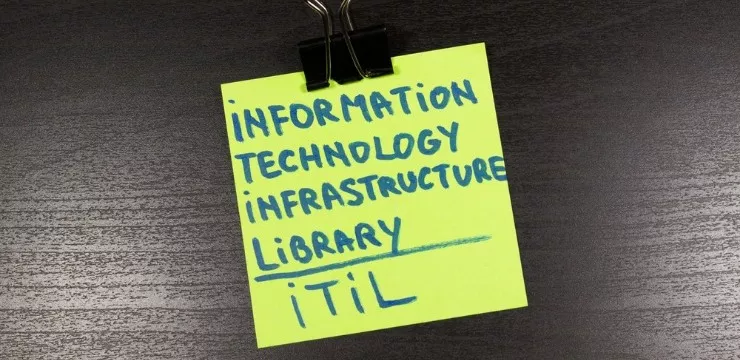
John F. Kennedy called change “the law of life”.
It’s also the law of business.
Every year the discipline of change management grows, as organizations try to keep pace with the digital revolution.
CEOs are increasingly concerned with implementing change successfully. Because it’s critical to remaining relevant and competitive.
The digital revolution shows no signs of slowing down. Neither does the need for organizational development and ITIL change management best practices.
But how can change managers ensure they’re getting the most value from the ITIL framework?
After all, with rapid change a daily business challenge, how can we be sure ITIL is still relevant? Particularly when there are so many different types of change.
ITIL change management 101
Change is just part of life for an IT service manager.
Outdated systems must be replaced with new ones. Existing technologies require updates. And evolving business demands need innovative tech solutions.
The digital revolution has rapidly increased the pace of change. Without the proper preparation, tools, and resources, this can be overwhelming for change managers.
The Information Technology Infrastructure Library (ITIL) provides a set of guidelines for IT service management. ITIL change management best practices make it easier for IT professionals to roll out and prioritize changes efficiently.
IBM, which contributed to ITIL’s development, describes it as an “important reference framework for providing a structured approach to IT Service Management.”
The ITIL change management process
The ITIL change management process can be broken down into eight steps.
- Request for change (creation)
- Request for change (review)
- Planning the change
- Testing the change
- Change proposal (creation)
- Implementing changes
- Reviewing change performance
- Closure
Your part in the process depends on the role assigned to you as per the ITIL change management best practices:
- Change Initiator: Recognizes and identifies the need for change. Someone who works directly with support services tools.
- Change Coordinator: Assesses requests for change. This person determines the risk and impact for requested changes, prepares implementation plans, and monitors progress.
- Change Manager: Manages change procedures, prioritizes change requests, evaluates risk, and maintains records of each change and its outcomes.
- Change Advisory Board: Authorizes changes and evaluates high risk requests.
- Approver: Approves or rejects changes.
- Change Implementation Team: Made up of those that make the changes and those that oversee the changes being made.
Supercharged ITIL change management best practices
Change managers play an integral role in an organization’s battle to stay competitive. You must constantly engage in a learning and development process to ensure the change tools and techniques you use are relevant.
The following tips can help you apply ITIL change management in a current and people-focussed way. This will give your change initiatives the best chance of success.
1. Take control of the process
It’s all very well to provide your organization with a new system or technology, but if nobody can use it properly, the change process has failed.
Adoption is central to ITIL change management success. Take control of the change process by placing a focus on adoption, not just implementation.
TedX speaker and Forbes contributor Michael Brito recognizes the crucial role adoption plays in digital transformation. Make sure digital adoption is a priority in your change management process.
2. Think outside of the ITIL box
ITIL change management best practices are enhanced when combined with other organizational change and adult learning principles. ITIL is not enough on its own.
While ITIL offers a valuable framework for addressing IT changes, many organizations choose to interpret ITIL within the context of their own policies and processes. Google created its own change model, for instance.
IT service management company Cherwell says:
“It is also important to have dedicated project management to coordinate implementation along with an IT Service Management solution in place to support your ITIL processes.”
So use an organizational change project management model, like Prosci’s ADKAR or Kotter’s 8-step process (or your own), alongside ITIL.
3. Personalize your approach
Change management is not one-size-fits-all. The more personalized your change management approach, the more successful it’s likely to be.
IT service management software company SunView advises change managers to beware using ITIL for everyone.
“…non-IT line-of-business departments handle change management differently. ITIL change management isn’t going to work for those teams – a different approach is necessary.” Jaime Spector, SunView Software
For example, some teams may respond well to fun exercises as part of the change management process. Others might need contextual guidance as part of the training.
4. Make change happen quickly
Change needs to happen fast.
“Slow and steady might win the race, but if change takes too long, it might be irrelevant.” Jaime Spector, SunView Software
ITIL offers a framework only. But there are plenty of tools out there that can help you to implement your changes faster.
Not only that, they can offer assistance in user adoption, automation, tracking, and reporting.
So, if you’re going to make an IT or organizational change in 2019, incorporate these top tips. Your ITIL change management best practices will be more effective and your IT transitions more successful.
WalkMe Team
WalkMe spearheaded the Digital Adoption Platform (DAP) for associations to use the maximum capacity of their advanced resources. Utilizing man-made consciousness, AI, and context-oriented direction, WalkMe adds a powerful UI layer to raise the computerized proficiency, everything being equal.



